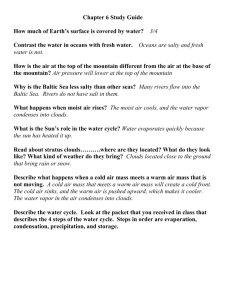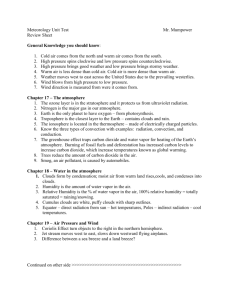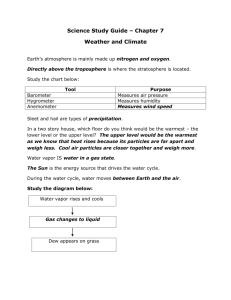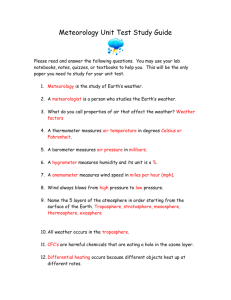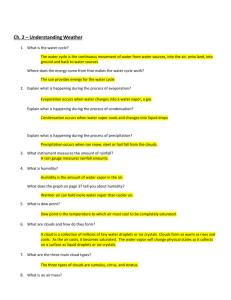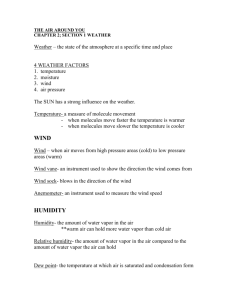Cloud Formation
advertisement
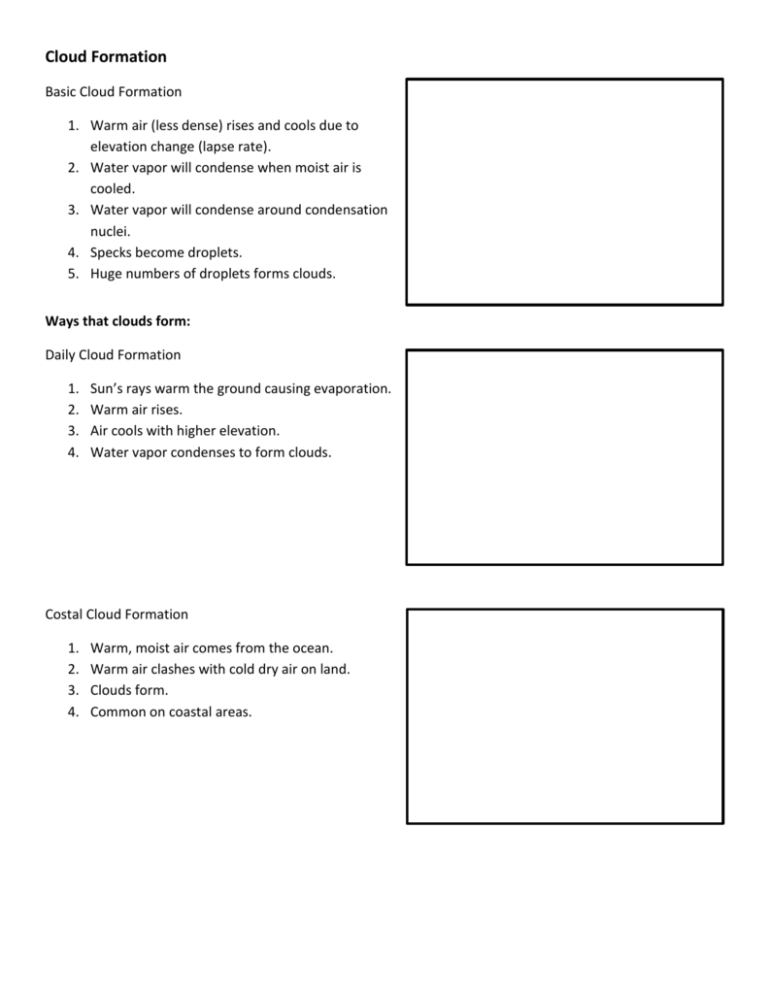
Cloud Formation Basic Cloud Formation 1. Warm air (less dense) rises and cools due to elevation change (lapse rate). 2. Water vapor will condense when moist air is cooled. 3. Water vapor will condense around condensation nuclei. 4. Specks become droplets. 5. Huge numbers of droplets forms clouds. Ways that clouds form: Daily Cloud Formation 1. 2. 3. 4. Sun’s rays warm the ground causing evaporation. Warm air rises. Air cools with higher elevation. Water vapor condenses to form clouds. Costal Cloud Formation 1. 2. 3. 4. Warm, moist air comes from the ocean. Warm air clashes with cold dry air on land. Clouds form. Common on coastal areas. Mountain Cloud Formation 1. Warm, moist air is elevated. 2. Air cools to dew point because of elevation change. 3. Clouds form. 4. Windward vs. Leeward a. Windward = rainy b. Leeward = dry 5. Common in mountain areas. Frontal Cloud Formations 1. Cold dense air (cold front) moves in causing warm air to be pushed upward. 2. Warm air cools with elevation and condenses to form clouds. 3. Common with arrival of cold front weather systems.
